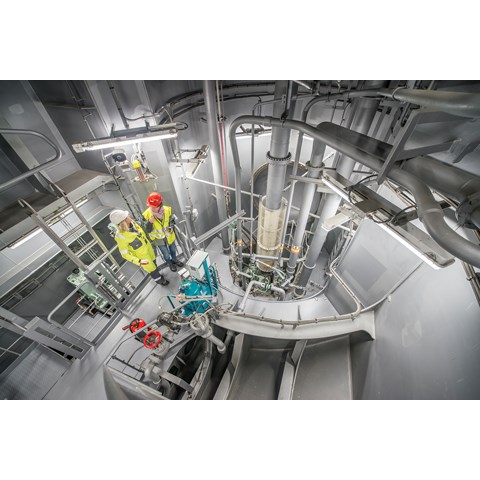High-risk task areas are spaces where people may potentially be exposed to various types of dangers. Of course, the definition of a situation that may be classified as dangerous depends on a person’s individual assessment as well as the risk assessment performed while preparing the emergency lighting design. Most often, however, risk factors include the periodic or permanent presence of crowds, which may cause increased stress in the event of an emergency evacuation, and that may lead to threatening circumstances. The second, very common risk factor is the presence of processes or machines that must be switched off prior to evacuating.
Minimising risk through safe evacuation lighting
In contrast to standby lighting, emergency lighting in high-risk task areas is included in the standard scope of emergency lighting. Therefore, it cannot under any circumstances be used to continue activities or processes, it only has to serve the purpose of ensuring their safe shutdown and the immediate evacuation of the area’s occupants. This type of emergency lighting should also be used during the evacuation process, when a series of events occurs that may generate a hazardous situation (like a convergence of evacuation routes at an emergency exit, where a large number of people may accumulate).
High-risk situations may occur when people are not very familiar with the building they are in (e.g. in cinema audiences or at sports facilities), but this is not a rule and can also happen to people with extensive knowledge about the facility (e.g. operators employed to inspect machines in a factory).
Prioritising panic prevention
Nevertheless, in each of these cases, the higher lighting parameters than those defined in the evacuation standard are above all meant to prevent panic and improve the visibility of potential obstacles and the escape route itself. However, they also allow you to obtain the appropriate lighting intensity levels in order to properly switch off the necessary machinery or equipment prior to evacuation, so that it will not continue to operate unattended.
Individual emergency lighting fixtures are most often used in order to ensure the appropriate lighting intensity parameters in high-risk task areas. The need to ensure the appropriate parameters in workspaces must be taken into account in the calculation process. The required time interval between the detection of a power failure and the emergency lighting switching on for this type of lighting should not exceed 0.5 s, and the duration time should be determined by the user of the space during the risk assessment process for the given facility.
EU guidelines require proper evacuation conditions for all occupied workspaces
Important emergency lighting design principles to remember about for high-risk task areas:
- familiarity with the facility and the escape routes
depending on the task and the people who occupy the premises - the duration time
that is dependent on the task - selecting lighting equipment
that will ensure an activation time no longer than 0.5 s after the power failure - the fact that the specific lighting requirements may be described by industry standards or associated with the performance of specific activities.
For example: the lighting scope "Safety lighting for participants" in the “Light and lighting – Sports lighting” standard states that during swimming events, in the event of a power failure, lighting must be maintained with no less than 5% of the general lighting intensity for a period of 30 seconds after the power outage, and only after this time will the regulations described in the emergency lighting standard come into force.
Emergency lighting requirements:
| Type of emergency lighting task / activity area |
Illuminance level (Emin) / Luminance level (Lmin) |
Diversity ratio (Ud) |
Area |
Duration |
Time until 50% / 100% illuminance is achieved |
| High-risk task area lighting | 10% of the general lighting, no less than 15 lx | 0.1 | On the task area plane | As required for the task | 5 s |
,(0.5,0.3957846,1,0.7915691)&format=jpg)